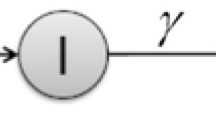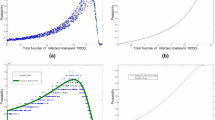Abstract
The propagation of topology-aware peer-to-peer (P2P) worms in the Internet is a serious threat due to their ability to evade traditional detection mechanisms by means of avoiding revealing any abnormal behavior. Recent increase in the popularity and the usage of P2P systems and applications is exponentially increasing the risk of this threat. The existing models of P2P worms’ propagation consider network topology as an important parameter affecting the propagation process. However, a drawback of these models is that they ignore the infection time lag (i.e. the time taken by worm to infect a host). In this paper, we extend the four-factor worm propagation model and propose timed four-factor model to consider both the network topology and the infection time lag. We have also developed an agent-based simulation model to conduct simulative experiments based on the proposed model. The results of our experiments show that the infection time lag has considerable impact on the attack performance of topology-aware P2P worms. The performance of different peer immunization strategies considering the launch time of immunization strategies and other effective parameters have also been investigated in this paper.










Similar content being viewed by others
References
Pele LI, Salour M, Su X (2008) A survey of internet worm detection and containment. IEEE Communications Surveys and Tutorials 10:20–35
Zhou L, et al (2005) A first look at peer-to-peer worms: Threats and defenses, In Peer-to-peer systems IV. Springer Berlin/Heidelberg, vol. 3640, pp. 24–35.
Xiao-song Z, Ting C, Jiong Z, Hua L (2010) Proactive worm propagation modeling and analysis in unstructured peer-to-peer networks. Journal of Zhejiang University—Science C 11(2):119–129
Chen G, Gray R (2006) Simulating non-scanning worms on peer-to-peer networks, In: Proceedings of the 1st international conference on Scalable information systems (InfoScale ‘06), 2006
Feng C, Qin Z, Cuthbet L, Tokarchuk L (2008) Propagation model of active worms in P2P Networks, In: The 9th International Conference for Young Computer Scientists, pp. 1908–1912
Fan X, Xiang Y (2010) Modeling the propagation of peer-to-peer worms. Future Generation Computer Systems 26(8):1433–1443
Zhang XS, Chen T, Zheng J, Li H (2009) Active worm propagation modeling in unstructured P2P networks, In: Proceedings of the 2nd Symposium International Computer Science and Computational Technology, pp. 35–38
Wei Y, Gui-RAN C, Yu Y, Xiao-meng S (2011) Stability analysis of P2P worm propagation model with dynamic quarantine defense. Journal of Networks 6(1):153–162
Zou CH, Gong W, Towsley D (2002) Code red worm propagation modeling and analysis. In: Proceedings of the 9th ACM conference on Computer and communications security, pp. 138–147
Philippe P, Trottier H (2001) Deterministic modeling of infectious diseases: theory and methods. The Internet Journal of Infectious Diseases 1:1528–8366
Zhang Y, Li Z, Hu Z, Huang Q, Lu C (2008) Evolutionary proactive P2P worm: propagation modeling and simulation, In: Proc. 2nd Int. Conf. on Genetic and Evolutionary Computing, pp. 261–264
Fan X, Xiang Y (2010) Modeling the propagation of peer-to-peer worms under quarantine, In: Network Operations and Management Symposium (NOMS), pp. 942–945
Jafarabadi A, Azgomi MA (2011) On the impacts of join and leave on the propagation ratio of topology-aware active worms, in In: Proceedings of the 4th international conference on Security of information and networks, pp. 209–214.
Jafarabadi A, Azgomi MA (2011) An SIR model for the propagation of topology-aware active worms considering the join and leave of hosts, In: 7th International Conference on Information Assurance and Security (IAS), pp. 204–209
Wang Y, Wang C (2003) Modeling the effects of timing parameters on virus propagation, In: Proceedings of the 2003 ACM workshop on Rapid malcode, pp. 61–66
Zesheng C, Lixin G, Kevin K (2003) Modeling the spread of active worms. IEEE INFOCOM 3:1890–1900
Albert L, Barabasi, Bonabeau E (2003) Scientific American, pp. 50–59
North MJ, et al (2013) Complex adaptive systems modeling with Repast Simphony, Complex adaptive systems modeling, vol. 1, no. 3
Niazi M, Hussain A (2009) Agent based tools for modeling and simulation of self-organization in peer-to-peer, ad-hoc and other complex networks. Communications Magazine 47(3):166–173
Niazi M, Hussain A (2011) A novel agent-based simulation framework for sensing in complex adaptive environments. IEEE Sensors Journal 11(2):404–412
Acknowledgment
The authors are grateful to Dr. Muaz Niazi for his help in the development of the agent-based simulation model presented in this paper, as well as language-editing parts of the initial draft of the manuscript.
Author information
Authors and Affiliations
Corresponding author
Rights and permissions
About this article
Cite this article
Mojahedi, E., Azgomi, M.A. Modeling the propagation of topology-aware P2P worms considering temporal parameters. Peer-to-Peer Netw. Appl. 8, 171–180 (2015). https://doi.org/10.1007/s12083-013-0242-2
Received:
Accepted:
Published:
Issue Date:
DOI: https://doi.org/10.1007/s12083-013-0242-2




